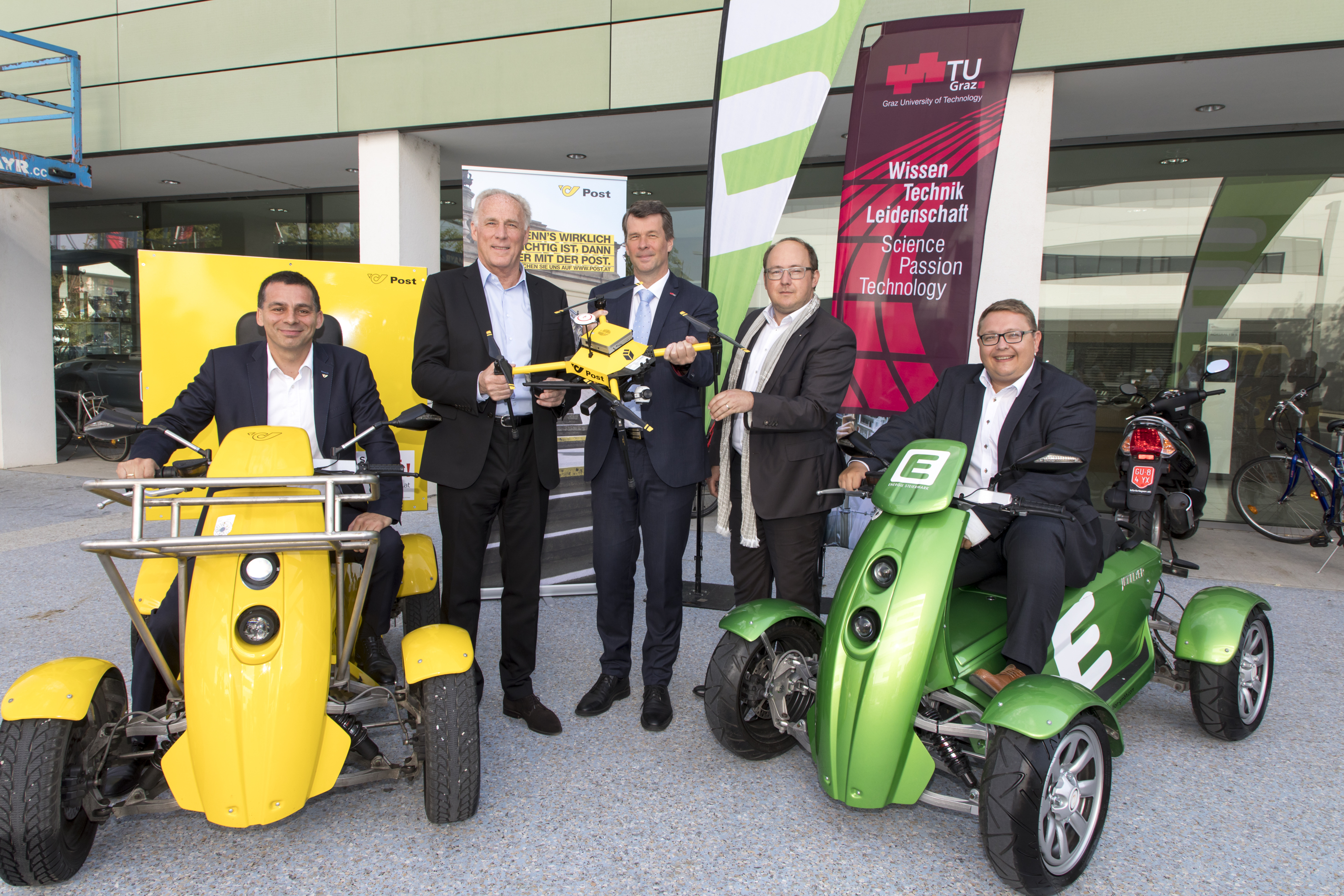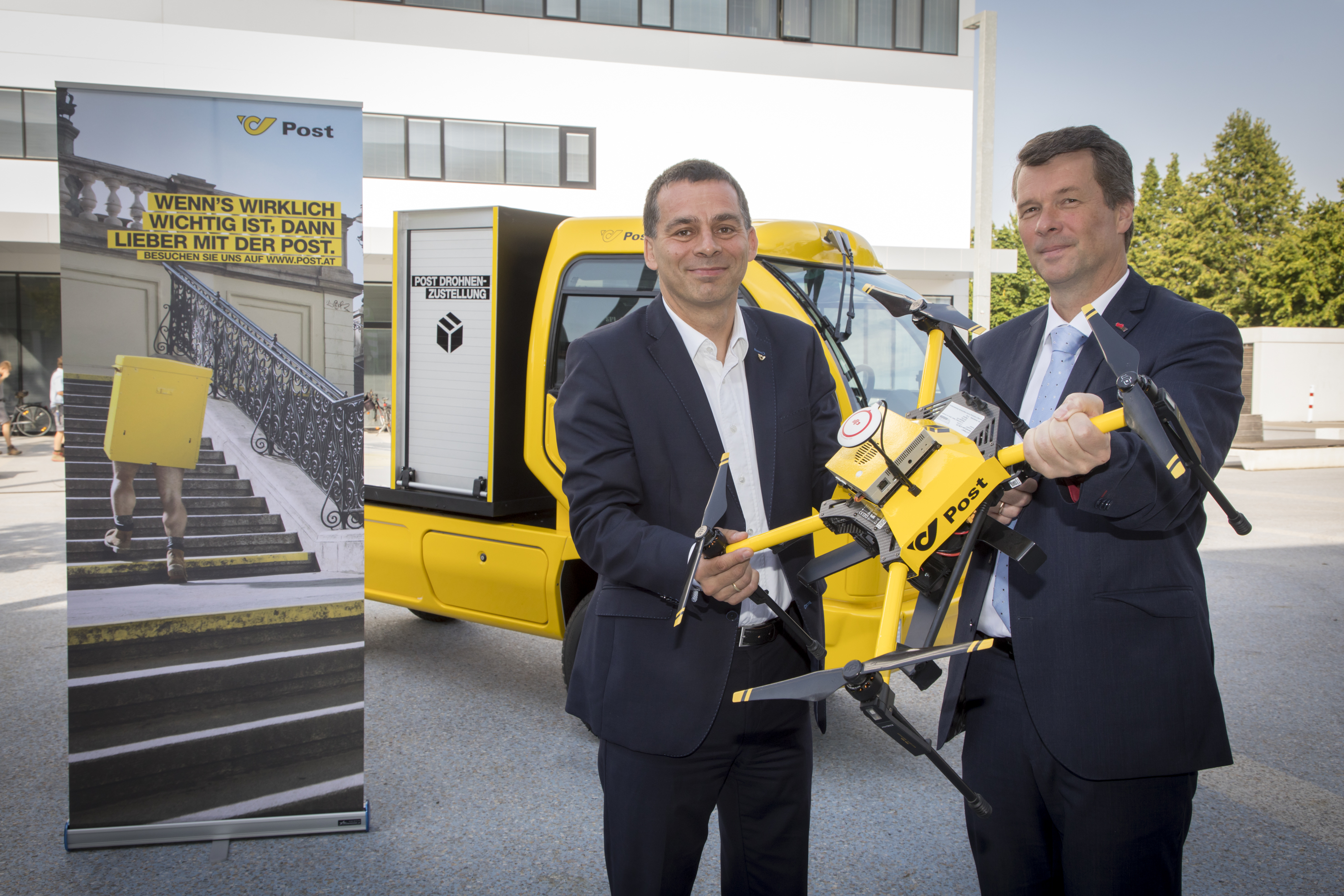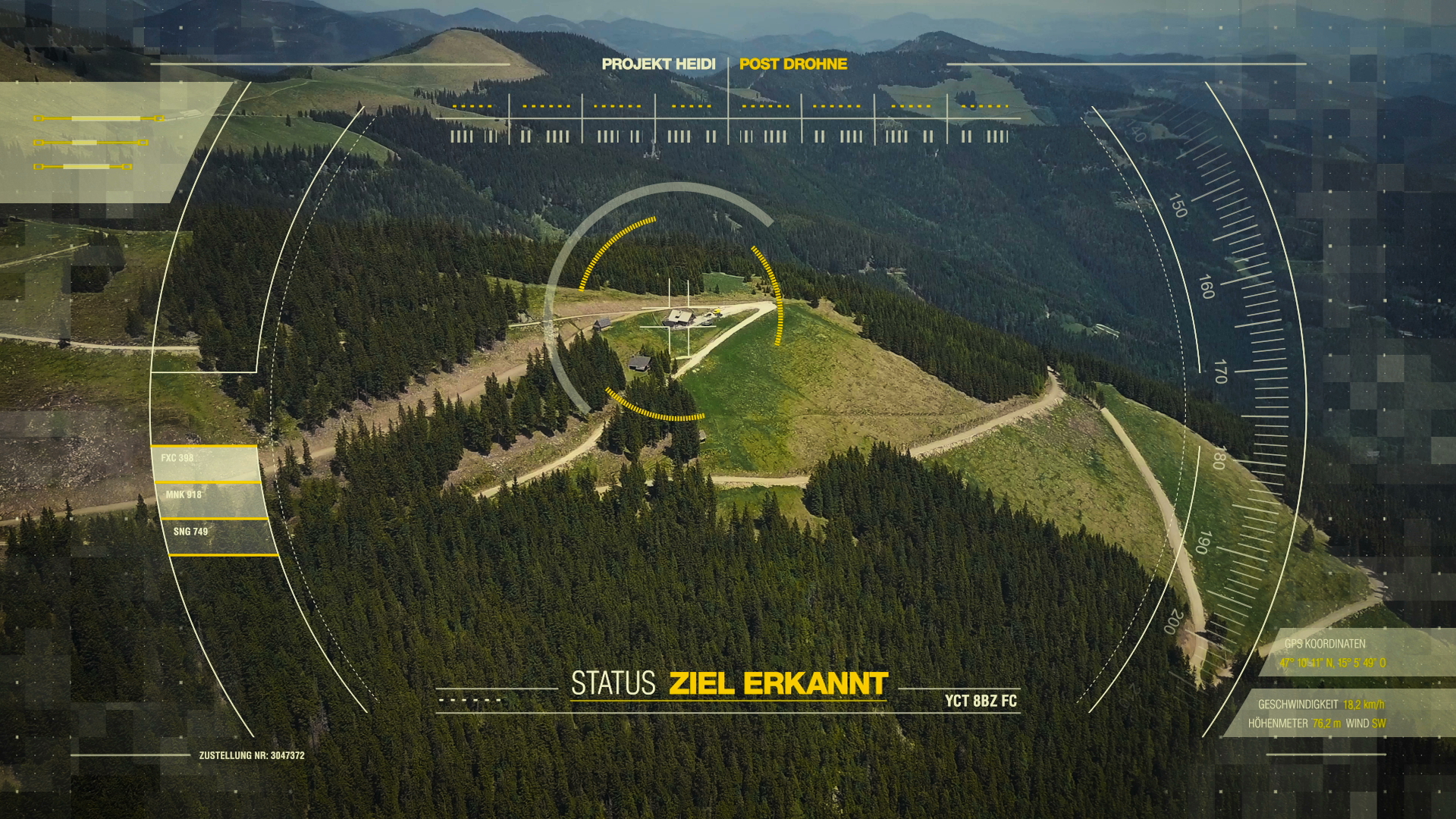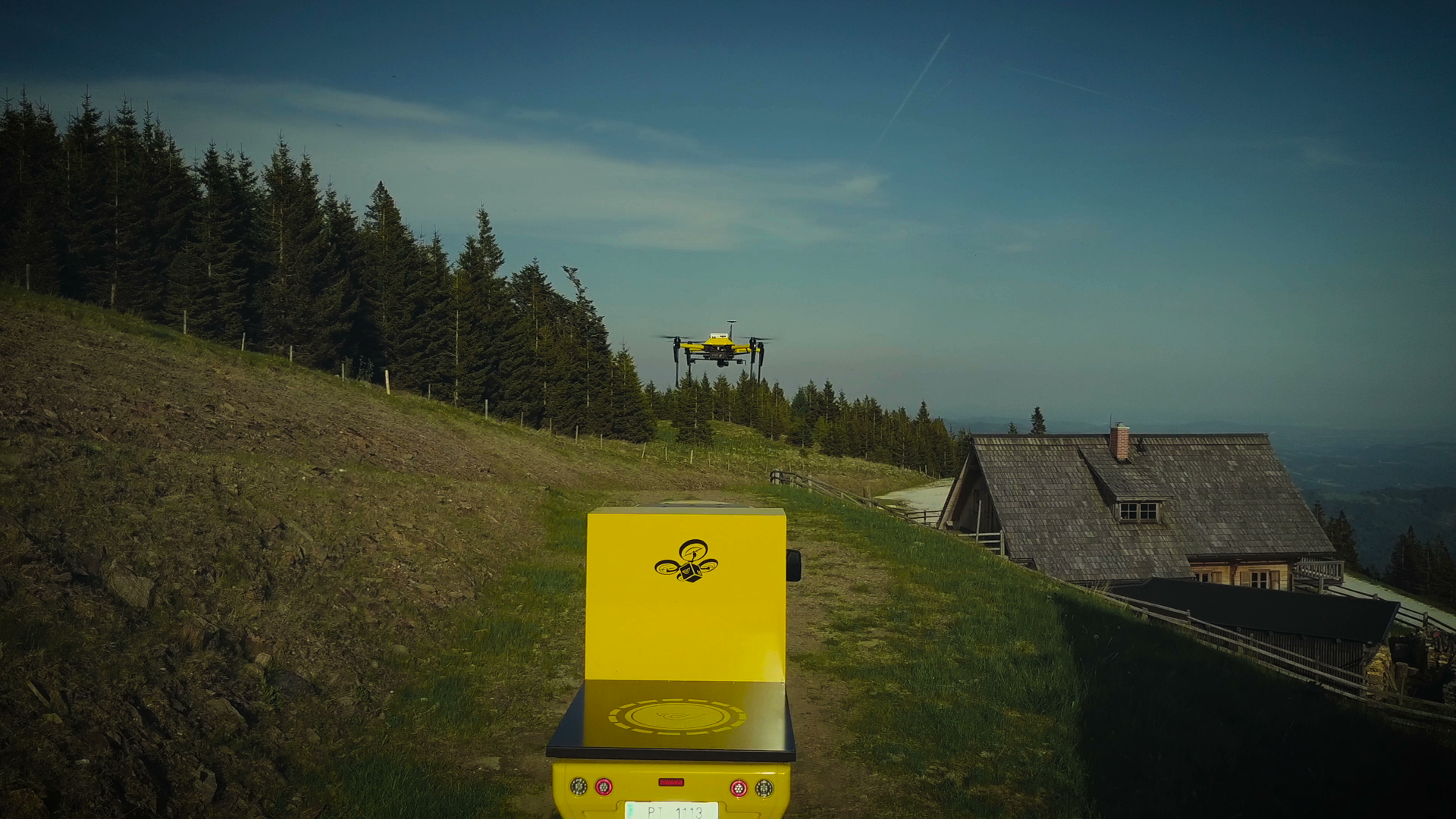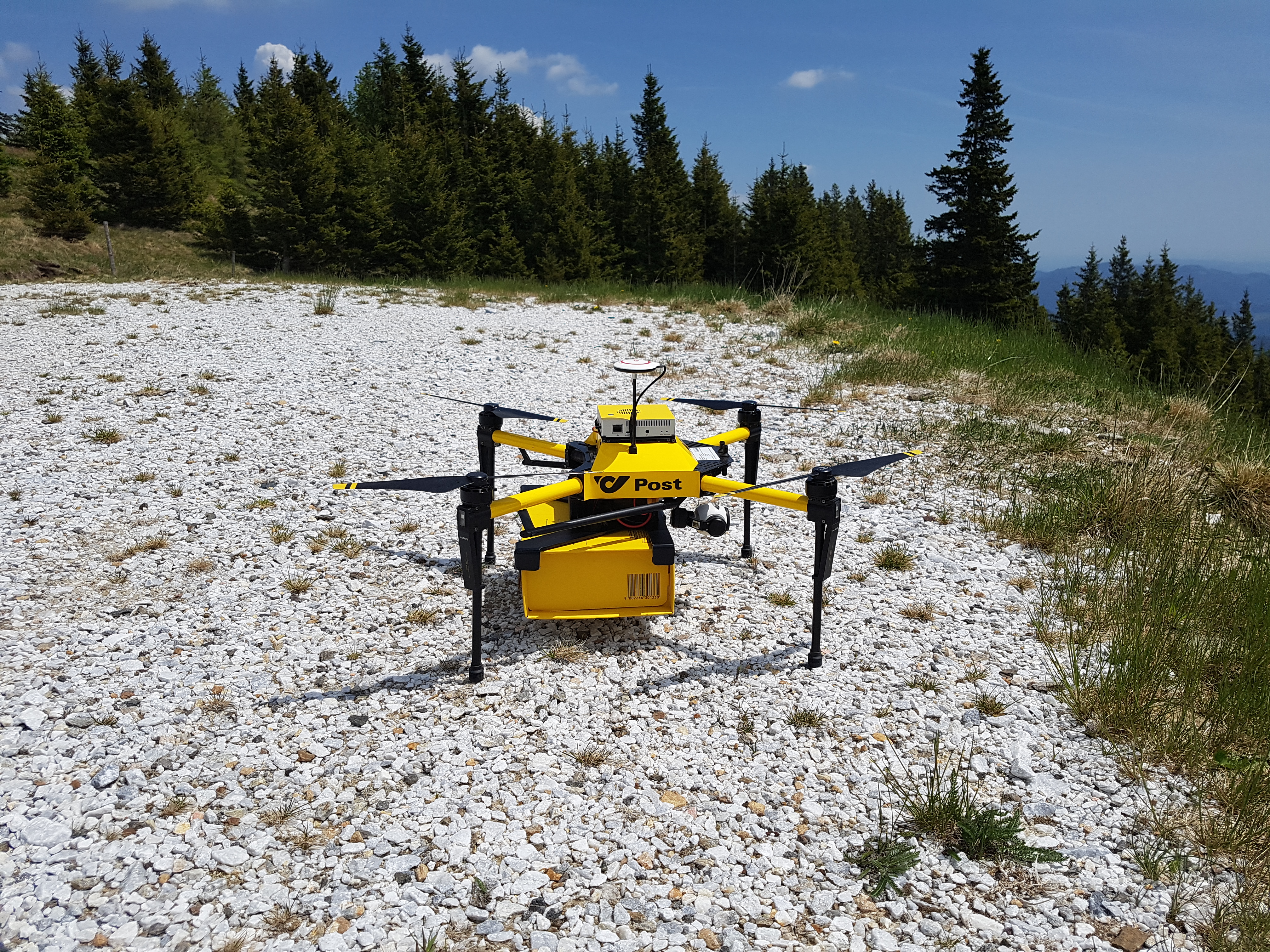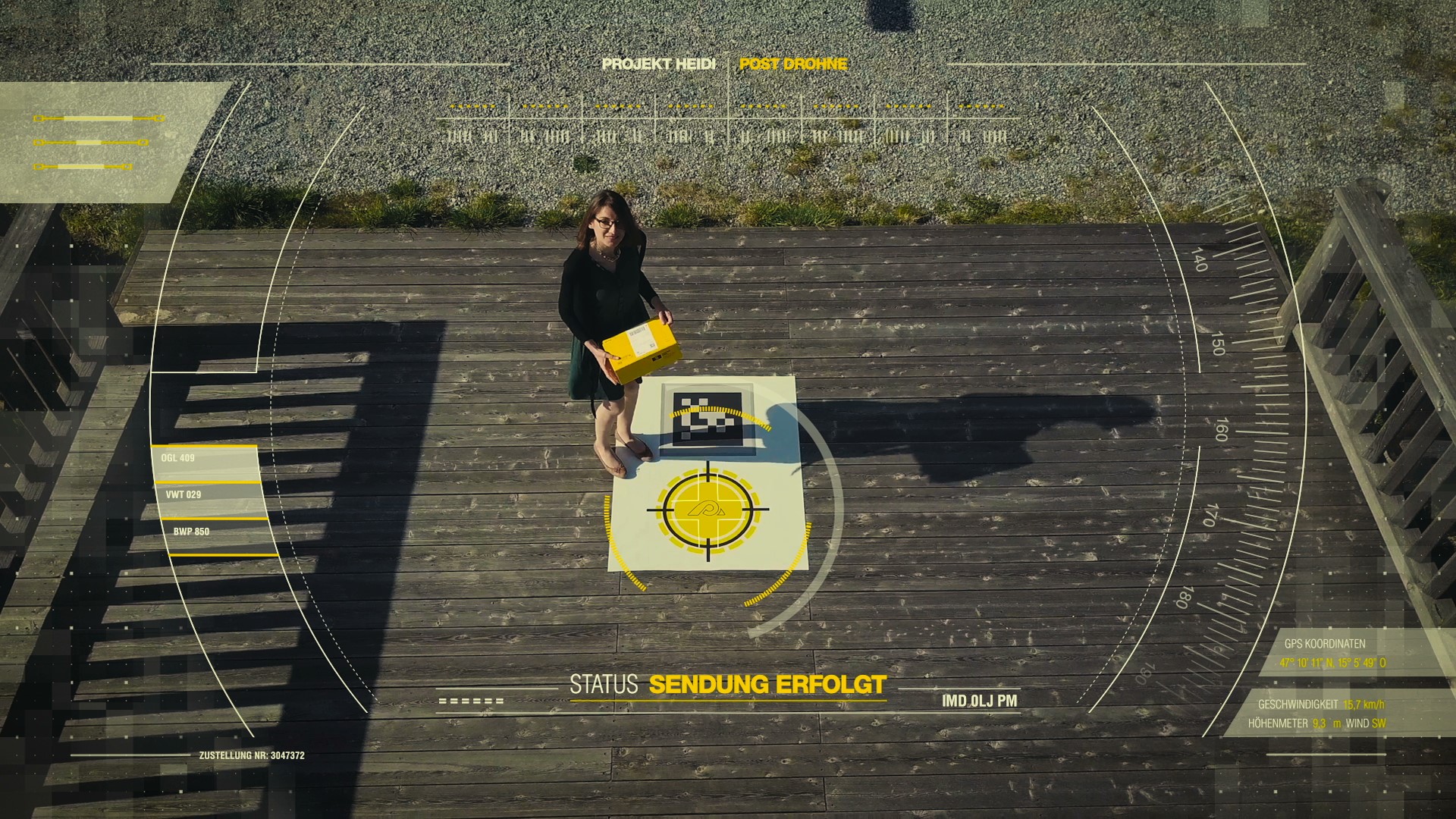TU Graz tests autonomous transport logistics in the “last mile”
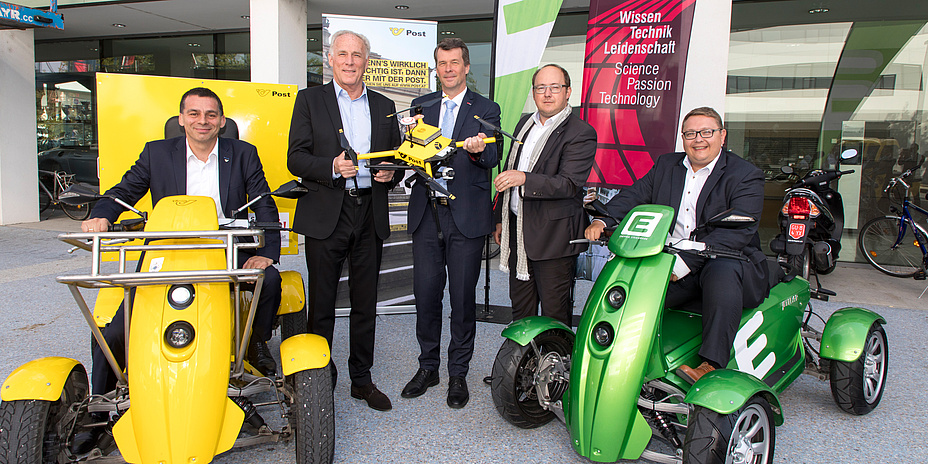
Airmail reloaded
A drone takes off carrying a letter or package in its payload. It heads for a remote mountain farm, recognises a coded mat on the ground and lands with pinpoint precision. The post has been delivered, the drone flies back to “its” postmen and is reloaded for its next job. To make this scenario possible, the autonomous drone’s image recognition, image processing and independent landing is crucial. TU Graz’s Institute for Computer Graphics and Vision is working on exactly these topics. “We provide the drone’s intelligence. What makes our work so special is that whereas other autonomous drones find their way based on GPS, our drones have cameras and their own computers on board which take over evaluation of images. In other words, the drone ‘sees’ where it’s flying to and behaves accordingly,” explains Friedrich Fraundorfer.At the moment his team is working intensively on the image evaluation software for the drone’s tricky landing process. “Apart from landing, there are other safety aspects which need to be taken into account. Not only do drones have to recognise their landing points, they also have to recognise whether there are people, animals or other obstacles there and react accordingly and fast,” says Fraundorfer. The starting point of the delivery drone is an ELI – an e-vehicle developed for community tasks by SFL which could also play a future role in postal deliveries. The Post AG company is currently engaged in testing the TU Graz system.
Autonomous postal deliveries on four wheels
Post is already being delivered these days by means of the two-seater Jetflyer electric vehicle – with of course just one person at the wheel. Together with Post AG, Energie Steiermark and i-Tec, a team from TU Graz is aiming to deliver packages autonomously in the inner city area. The basic concept for the autonomous Jetflyer originated in a robotics-oriented diploma thesis at the Institute of Software Technology. Robotics expert Gerald Steinbauer explains: “We tried out the idea with smaller autonomous robotic vehicles at Campus Inffeldgasse, and software and algorithms were developed in the context of the RoboCup. Now we’re putting together a proof of concept for which we’re transferring our knowledge to the Jetflyer in a tailor-made way.”In concrete terms, a standard Jetflyer is being painstakingly converted at the Institute of Automotive Engineering. Transport boxes are attached, for which the driver’s seat is made smaller. Sensor system and computer with suitable software for autonomous control (drive by wire) and the vehicle’s navigation (automatic location identifier in an urban area by means of maps and laser sensors, efficient route planning and reliable avoidance of dynamic “obstacles”, such as pedestrians and cyclists) are being integrated. Autonomous navigation in an urban area represents a huge challenge compared to indoor environments due to increased complexity and environmental dynamics. Two members of staff with RoboCup experience will have responsibility for this at the Institute of Software Technology for six months. The Jetflyer should be able to navigate around the pedestrian zone of the Graz inner city by the autumn of 2017. Costs of the technology trial will be shared by Post AG and Energie Steiermark AG.
Both areas Robotics and Computer Vision are part of the Field of Expertise Information, Communication and Computing, one of five strategic research foci of TU Graz.
Kontakt
TU Graz | Communications and Marketing
Phone: +43 316 873 6006
Mobile: +43 664 60 873 6006
Email: <link int-link-mail window for sending>barbara.gigler@tugraz.at



